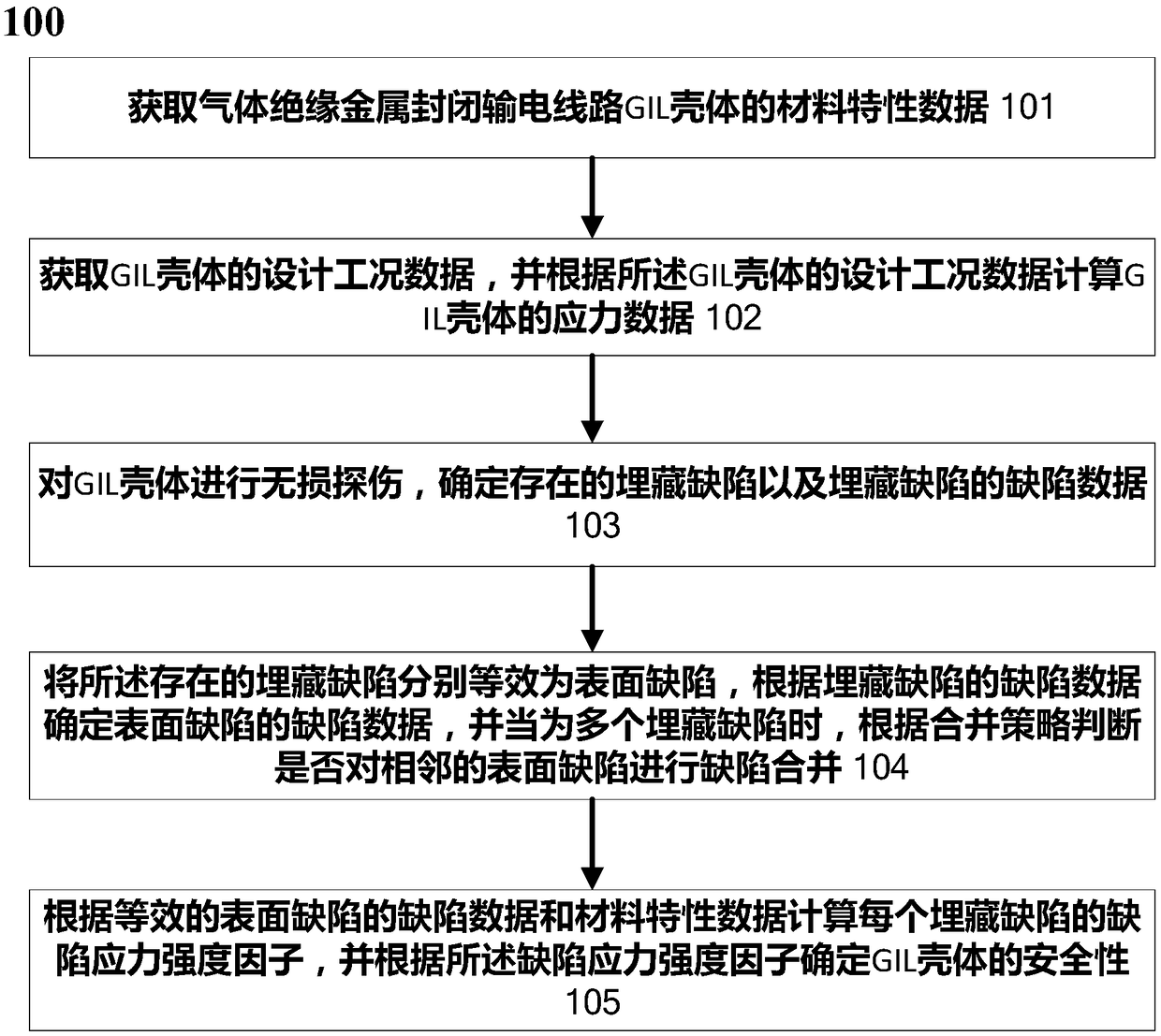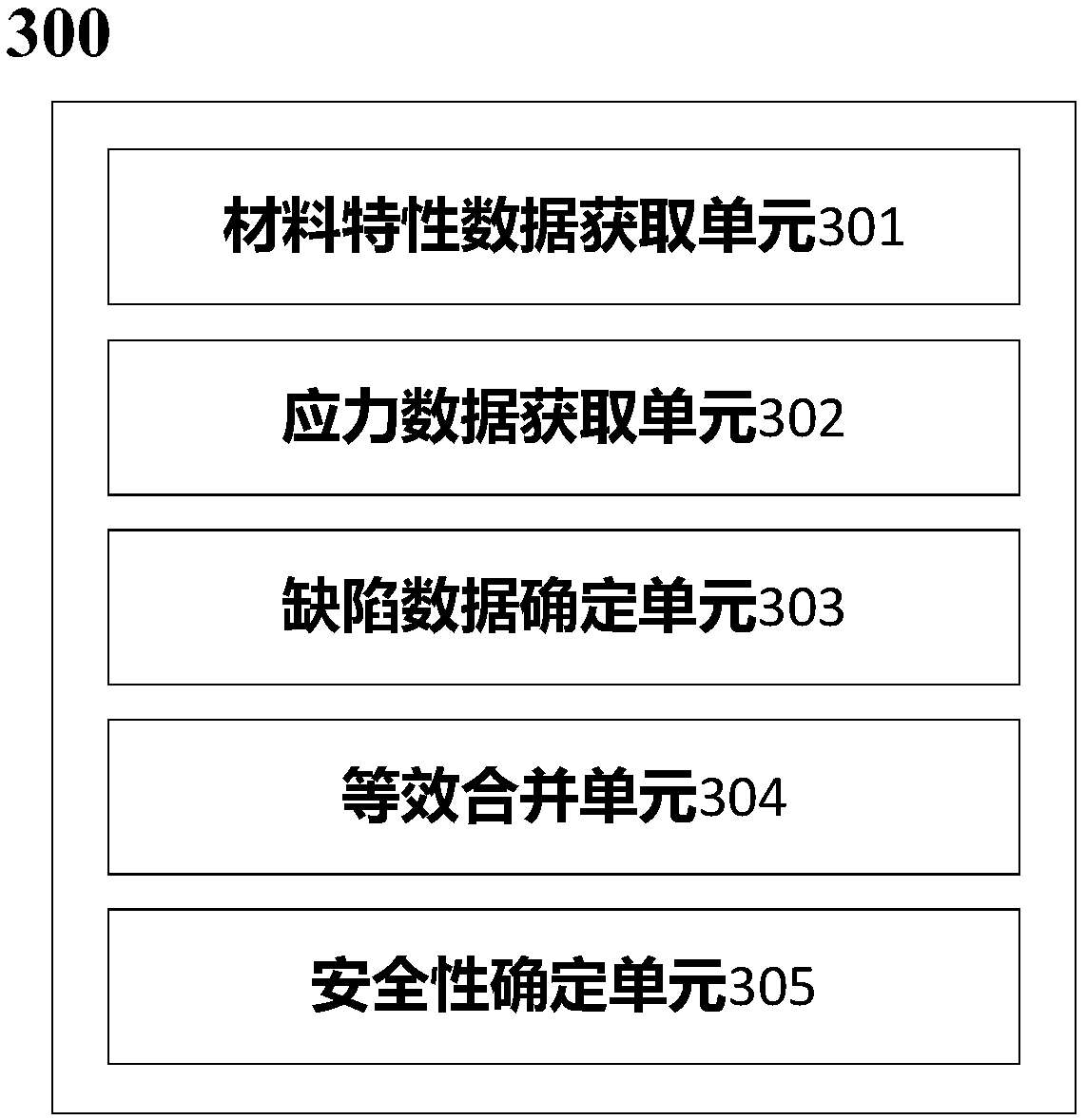Method for determining safety of GIL shell containing buried defects and system thereof
A safety and defect technology, applied in the field of GIL shell safety, can solve problems such as GIL shell safety and remaining life evaluation
- Summary
- Abstract
- Description
- Claims
- Application Information
AI Technical Summary
Problems solved by technology
Method used
Image
Examples
Embodiment approach
[0147] A UHV GIL shell is made of 5754 aluminum alloy, and there are two buried cracks inside the weld seam of the conventional non-destructive testing body:
[0148] Crack 1: The crack depth is a 1 = 3mm; the crack length is 2c 1 =8mm; 2mm from the outer surface of the shell;
[0149] Crack 2: The crack depth is a 2 =2.5mm; the crack length is 2c 2 =9mm; 3mm from the outer surface of the shell;
[0150] The distance between two cracks is s=6mm;
[0151] (1) Acquisition of material properties
[0152] The same batch of 5754 aluminum alloy was used for tensile, fracture toughness and fatigue performance tests to obtain the properties of the material, as follows:
[0153] GIL shell specification: 1160*16mm.
[0154] The service condition of GIL bears 0.6MPa.
[0155] Material yield strength: 150MPa; tensile strength: 240MPa
[0156] Fracture toughness: K IC =50MPa√m
[0157] Fatigue crack growth performance: da / dN=4.34×10 -5 (ΔK) 1.2 mm / cycle
[0158] (2) GIL Shell...
PUM
 Login to View More
Login to View More Abstract
Description
Claims
Application Information
 Login to View More
Login to View More - R&D
- Intellectual Property
- Life Sciences
- Materials
- Tech Scout
- Unparalleled Data Quality
- Higher Quality Content
- 60% Fewer Hallucinations
Browse by: Latest US Patents, China's latest patents, Technical Efficacy Thesaurus, Application Domain, Technology Topic, Popular Technical Reports.
© 2025 PatSnap. All rights reserved.Legal|Privacy policy|Modern Slavery Act Transparency Statement|Sitemap|About US| Contact US: help@patsnap.com



